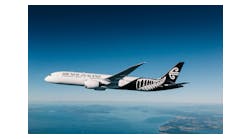Over 40% of the world’s aircraft fleet is leased rather than owned by airlines, according to Boeing data. It is only natural that banks and other financial institutions play a major role in aircraft leasing, as these are high value assets that efficiently employ large amounts of capital and have a great ROI. However, while these companies are run by financial specialists, plane leasing still contains an aspect that falls outside of their area of expertise – and costs them millions.
The average term for the lease of a new aircraft is years, with general trend being 9 years which is close to half of its life. Most of the time, it is the lessees responsibility to take care of aircraft maintenance. In a survey of airlines carried out by the FAA, almost all of them appeared to be outsourcing component maintenance (overhaul, performance restoration, etc.) to third party repair shops including engines. Such repair shops have the necessary facilities, equipment and qualified staff as well as approved capability by relative authority which is not normally possessed by airlines. All of the respondents outsourced other maintenance (aircraft heavy maintenance, modifications, painting, etc.) to third party MRO, too.
In this scenario, the lessors shall rely on signed contracts but still must trust the lessees or the company they hire to keep aircraft and its documentation maintained meeting appropriate aviation standards. When the time comes to lease aircraft to another company, it has to be inspected to ensure safety and airworthiness. This can be relatively quick and cheap if all the documentation is in order and aircraft has been well kept. In other cases, many findings can be raised which will lead to long inspection term and cost serious money.
An aircraft that spends a month on the ground can cost up to $50 000 per day in loses as various maintenance works and parking fees need to be paid. And that is a plane that in pristine condition – after lengthier or rougher lease, engine overhaul on an Airbus A320 FAM or Boeing 737NG plane alone can cost near $3 million, as shown by SGI Aviation data. This is the price before cabin reconfigurations, which start at $100 000 and can spiral into millions. Of course, the overhaul would be even more costly on wide-body planes.
“We are aware that lessors are financial specialists first and they lack the technical specialists that could efficiently look after the aircraft,” says Donatas Dockus, VP Sales for Aircraft Lessors at FL Technics. “That is why lessors often contract technical specialists or corresponding organizations to carry out inspections before, during or after the period of the lease, making sure that the lessees are keeping aircraft according to signed contract and requirements of related aviation authority. Those specialists can also consult on more technical aspects of aircraft leasing and can warn the lessors of risky deals. Not being aware of, say, engine trouble, can cost a lot in this business.”
Any unexpected findings while receiving the plane or during the delivery to the next lessee may have serious impact on lease conditions or even reduce price of the asset by 15-30%, as stated by findings of AviaAM Leasing. Inability to deliver a plane on the time outlined in the contract may incur substantial penalties and even loss of business. Meanwhile, the plane would spend time idle on the ground, generating loss instead of profit.
“Knowing the financial side of leasing is important, but investing in technical knowledge is crucial if one wants to maximize profits. Opening an engineering department and collecting a crew from scratch is a lengthy, expensive task, one that actual airlines don’t always conduct themselves. For a smart investor in aviation hiring consultants sounds way more attractive. You invest in the plane – they keep it flying,” concludes D. Dockus.





